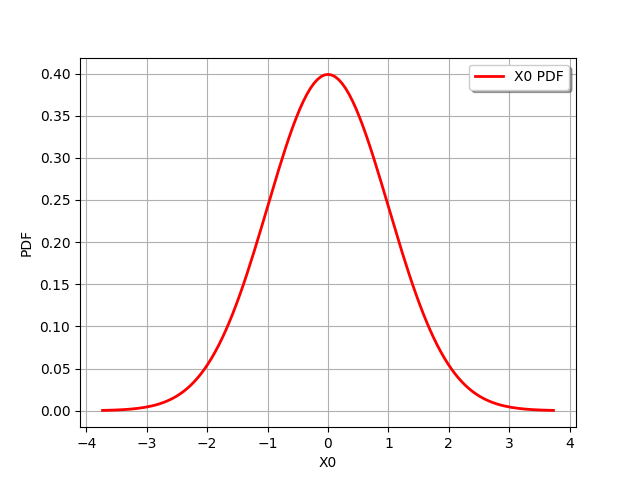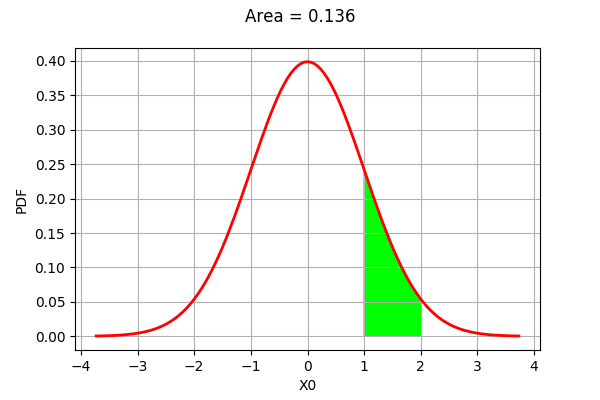How to fill an area¶
In this example, we show how to fill specified area with a given color.
[1]:
import openturns as ot
We generate a sample from a standard gaussian distribution.
[2]:
dist = ot.Normal()
dist.drawPDF()
[2]:

[3]:
def linearSample(xmin,xmax,npoints):
'''Returns a sample created from a regular grid
from xmin to xmax with npoints points.'''
step = (xmax-xmin)/(npoints-1)
rg = ot.RegularGrid(xmin, step, npoints)
vertices = rg.getVertices()
return vertices
[4]:
a = 1.
b = 2.
[5]:
nplot = 100 # Number of points in the plot
x = linearSample(a,b,nplot)
y = dist.computePDF(x)
The following function uses the PolygonArray class to create a area filled with a given color.
[6]:
def drawInTheBounds(vLow,vUp,n_test):
'''
Draw the area within the bounds.
'''
palette = ot.Drawable.BuildDefaultPalette(2)
myPaletteColor = palette[1]
polyData = [[vLow[i], vLow[i+1], vUp[i+1], vUp[i]] for i in range(n_test-1)]
polygonList = [ot.Polygon(polyData[i], myPaletteColor, myPaletteColor) for i in range(n_test-1)]
boundsPoly = ot.PolygonArray(polygonList)
return boundsPoly
Compute the bounds to fill: the lower vertical bound is zero and the upper vertical bound is the PDF.
[7]:
vLow = [[x[i,0],0.] for i in range(nplot)]
vUp = [[x[i,0],y[i,0]] for i in range(nplot)]
[8]:
area = dist.computeCDF(b) - dist.computeCDF(a)
[9]:
boundsPoly = drawInTheBounds(vLow,vUp,nplot)
graph = dist.drawPDF()
graph.add(boundsPoly)
graph.setTitle("Area = %.3f" % (area))
graph.setLegends([""])
graph
[9]:

The CDF difference is equal to the area under the curve.
 OpenTURNS
OpenTURNS